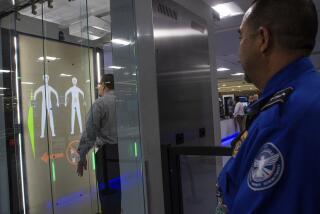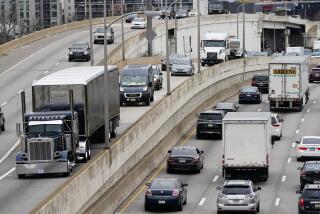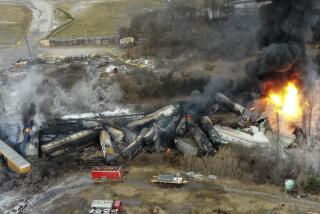4 Million in Transportation Industry Face Drug Testing : Federal Agency Orders Random Screening by ’90
- Share via
WASHINGTON — The federal government today ordered a broad range of transportation workers from commercial pilots to truckers to undergo random drug testing. But the testing need not begin for at least a year.
Transportation Secretary James H. Burnley IV told a news conference that the regulations will cover about 4 million workers and are intended to “take us as far as (is) practically possible” toward ending drug use among workers in jobs where safety is an issue.
The Transportation Department said without offering specifics that large companies and transit agencies will have until December, 1989, to begin the testing. Smaller ones will have up to two years.
Records Required
Under the new rule, employers must keep records of testing results and make them available to federal officials. It was not clear how independent truckers would be expected to comply with that provision.
Unions representing transportation workers have strongly opposed required random testing, although the unions have been willing to go along with other tests such as those conducted before employment or after accidents.
The random testing requirement is virtually sure to be challenged in the courts, but Transportation Department officials have said they are confident of having the tests upheld because of the safety implications.
The testing regulations will cover an estimated 2.5 million over-the-road truckers, including the tens of thousands of independent truckers, many of whom work for themselves and drive their own trucks.
Critics as well as some supporters of the testing regulations have questioned whether the rules should even cover truck drivers because the testing may be virtually impossible to enforce among the independent drivers.
According to government sources, who asked not to be named, other workers subject to random tests include:
--More than 500,000 airline workers, including 50,000 commercial pilots, more than 80,000 flight attendants and nearly 300,000 aircraft mechanics.
--Nearly 300,000 railroad employees, including engineers and other train operators.
--About 110,000 urban mass transit workers, including subway and city bus drives.
Under the regulations, workers would be subject to pre-employment tests, periodic testing whenever a person takes a physical, post-accident tests, tests for reasonable cause and random tests.
Expected for Months
The drug testing rule had been expected for months.
Burnley’s predecessor, Elizabeth Hanford Dole, called for increased testing for drugs among workers in all modes of transportation in early 1987. The department has issued proposed regulations for the various modes of transportation during the last year.
Congress this year debated legislation that would have required drug testing of millions of transportation workers, but the provision was never approved, in part because of strong opposition from organized labor. The department has maintained, however, that it does not need new regulations to impose the testing requirements.
More to Read
Sign up for Essential California
The most important California stories and recommendations in your inbox every morning.
You may occasionally receive promotional content from the Los Angeles Times.










